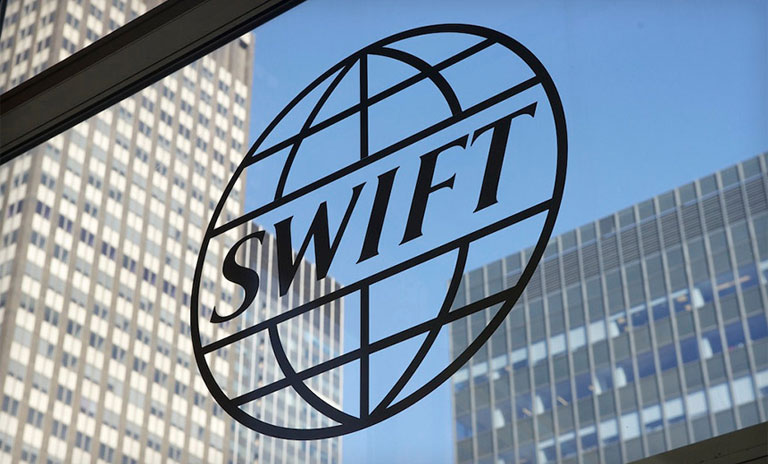SWIFT News – Interview with Sébastien De Gasquet

Sébastien De Gasquet, Strategic Relationship Manager for SWIFT, agreed to an interview to discuss the latest news from SWIFT.
Sébastien joined SWIFT in 2018. He works with a varied customer portfolio, composed of Financial Institutions, Corporates and Software editors. He also actively participates in the animation of the Corporate segment and in the associated offer definition for SWIFT at a global level. Prior to joining SWIFT, he worked for almost 10 years in Cash Management and Consulting for financial industry.

Hello Sebastien, 2021 has been a busy year for SWIFT and it looks like 2022 will be no different. Can you tell us about SWIFT related projects for the last 2 years?
Yes, that’s an understatement! SWIFT has been undergoing a fundamental transformation for several years now, with the ultimate goal of making all international payments instantaneous and frictionless from end to end, anywhere in the world. This involves significant structural and philosophical changes for us and our community, and it keeps us very busy! We are also the driving force behind the migration to ISO 20022 of all MT1XX, MT2XX and MT9XX messages in the interbank sector, but we will cover that later. Regarding companies, beyond the GPI and G4C implementation as standards, a lot is also happening, especially on the API front where we are currently developing the features related to Instant Treasury.
Our long-term objective here is to enable companies connected to the network to exchange flows and information via SWIFT in an even more optimal, instantaneous and standardized way, while keeping, at the very least, the same level of security. Quite a challenge!
Our Allmybanks users are particularly interested in two topics: G4C and the November 2022 deadline for ISO 20022 in SWIFT exchanges. Let's start with G4C, can you explain what this service is and what interests companies have in using it?

G4C, or GPI for Corporates, is a way for companies to get all the information they need, in real time, on international payments sent or received. Companies can initiate a payment through their G4C-certified treasury tool and directly integrate a tracking number that will remain the same until the beneficiary. This tracking number, or UETR, will allow all the banks through which the flow will transit to provide real-time information to the sender, on the status, charges, exchange rate… until the confirmation of credit in the beneficiary’s account. This replaces the commonly used “copy of the MT103” which only proves one thing: that the flow is on the network. In addition, we have integrated to the
G4C standard offer an “inbound tracking” feature that allows a company to be informed in advance that an international payment has arrived on the network for credit to one of its accounts. It will also be possible to track the payment progress through the entire chain and to make an accurate forecast accordingly.
Is this service free with a SWIFT subscription? How can a company benefit from it?
There are several ways to benefit from GPI when you are a company:
- By contacting the banks’ support teams, most of which have access to live information.
- By using certain interfaces available in the e-banking tools of these same banks, which allow for precise monitoring of flows.
- By using the GPI for Corporates feature, which allows customers connected to SWIFT to receive tracking information directly in the treasury tool, without any SWIFT cost.
We mentioned earlier the obligation to adopt the ISO 20022 standard in SWIFT exchanges as of November 2022. Why do you want to standardize exchanges? What does it imply for companies and banks?
This desire for standardization follows a strong market trend which aims at making ISO 20022 an international standard. This format, which is more complete and richer than the existing MT formats, represents an opportunity for companies. The richness and quality of the information contained in this format will allow for a more secure and efficient exchange of information, preserving the integrity of the information related to transactions – without alteration or truncation. This will make it easier to fightfraud and money laundering. This richer, more structured data is also a key element to facilitate the automation and resolution of incidents that may occur during a transaction. In addition, the ISO standard provides a common foundation between the messages and the Enterprise APIs we are building as part of Instant Treasury. This will further facilitate the integration in the Corporates’ information system.
It should also be noted that there are actually two important dates for this ISO 20022 migration for payment and reporting messages passing through SWIFT:
- November 2022 is when we will open the channels that will allow these exchanges (known as FIN Plus or Interact). This date coincides with the transition of many market infrastructures to ISO 20022. From November 2022, banks will be able (without obligation) if they are ready, to exchange all their interbank flows, currently in the MT1XX, MT2XX and MT9XX formats, in their ISO 20022 equivalents.
- November 2025 is when it will no longer be possible for banks to exchange flows in MT1XX, MT2XX or MT9XX format in interbank on the SWIFT network. Only the ISO 20022 equivalents will be possible.

Interoperability between institutions using different standards during the three-year coexistence period will be facilitated by our in-flow translation service. This will allow institutions that have migrated to ISO 20022, as well as their customers, to benefit from the advantages of this format, even if their counterparts have not yet adopted it. We therefore encourage companies to start the transition today, if they have not already done so. This is especially important because the APIs we are developing will also be based on an ISO 20022 language, so the work we do will be doubly useful.
Beyond simply facilitating payments, ISO 20022 will drive the creation of innovative treasury solutions, including faster data-driven decision-making processes. Coupled with intelligent data analysis, companies will be able to use ISO 20022 to make more accurate forecasts and refine their strategic decision making.
However, I would like to emphasize that we are not enforcing any obligations on the SWIFTNet business-to-bank or bank-to-business channels, neither now nor in 2025.
What other SWIFT projects are in the pipeline?
In 2021, we achieved important steps in our strategy to enable financial institutions and other participants to conduct instant, seamless end-to-end transactions around the world. These include the following services:
- SWIFT Go was launched in July and is revolutionizing the experience of end users and small and medium-sized businesses when sending low-value cross-border payments. The service enables banks to offer their customers predictable, fast and secure payments at a competitive cost.
- Payment Pre-Validation Service eliminates one of the major causes of international payment blocking delays – inaccurate beneficiary information. Real-time verification of this data upstream will ensure that a payment that leaves the corporate environment has already been cleaned up and repaired if necessary: the data required by the banks is complete, the beneficiary is not on a sanctions list, the IBAN has not been identified as fraudulent, the payee’s account exists and does belong to the supposed beneficiary, etc… Cross-referencing all of this data and making it available in the issuer’s environment will ensure that the payment is no longer slowed down by the various checks set up by each institution in the chain, thus avoiding unnecessary delays.

These initiatives are fully in line with SWIFT’s “platform” strategy described below, as in our drive to reduce friction as much as possible, we wish to provide our customers with the appropriate tools to enable them to optimize their efficiency and continue to grow.
This year we will continue to develop our platform that will provide end-to-end transaction management, using rich data to orchestrate flows between different financial institutions and other participants, extending our capabilities beyond messaging. This platform will enable a more reliable, instantaneous, frictionless and value-added customer experience.
